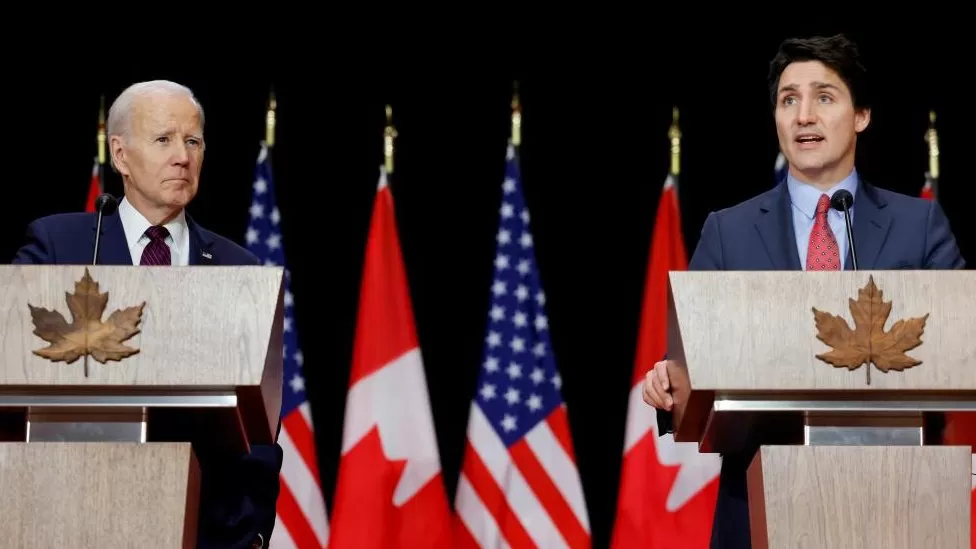A new US-Canada border deal meant to halt the flow of asylum seekers at unofficial border crossings has taken effect.
Migrants caught crossing anywhere along the 3,145 mile (5,060km) border can now be sent back.
Large numbers of unsanctioned crossings have been recorded via Roxham Road at the US-Canada border.
The new accord closes a loophole that allowed migrants to claim asylum at such unofficial ports of entry.
The announcement came as President Joe Biden visited Ottawa, Canada, to discuss a series of economic, trade and immigration issues with his Canadian counterpart, Justin Trudeau.
The deal is part of efforts to limit an influx of migrants at Roxham Road, an unofficial crossing between New York state and the province of Quebec.
A record number of migrants – some 40,000 – crossed into Canada last year, the vast majority of which entered at Roxham Road.
As part of the pact, Canada will also create a new refugee programme for 15,000 migrants fleeing persecution and violence in South and Central America, the prime minister’s office (PMO) said.
What is the Safe Third Country Act?
The original 2004 agreement, the Safe Third Country Act (STCA), requires migrants to make an asylum claim in the first “safe” country they reach, whether it is the US or Canada.
It allowed either nation to turn migrants away at official points of entry – but not at unofficial crossing points, like Roxham Road.
The new deal extends the agreement along the entire border, including internal waterways, the prime minister’s office said in a statement.
The new deal has been criticised by refugee advocates as ineffective to ending the irregular crossing of migrants into Canada.
It is not going to stop people, Abdulla Daoud, executive director at The Refugee Centre in Montreal, told the BBC on Friday, adding he is concerned it could incentivise human smuggling.
Speaking about the new refugee programme, he said: “The numbers are too low. We had 40,000 cross just in the past year – 15,000 is a low number and just from one part of the world, the Western hemisphere.”
The US side has also seen a rise in migrant crossings into Canada.
Mr Biden’s administration has also proposed to crack down on asylum seekers at the US southern border with Mexico by making it harder for migrants to claim asylum once Covid border controls lift in May. The proposal has met backlash from human rights groups.
What else was Biden doing in Canada?
While in Canada, the president spoke of the importance of the deep economic ties and the defence alliances between the two nations, as well as their joint support for Ukraine.
The two leaders pledged to stand together against authoritarian regimes – in part by reducing dependence on China for semiconductors and the critical minerals need to make batteries and electric cars.
Also discussed was the ongoing instability in Haiti, where the economy is in crisis and gang violence and kidnappings have risen sharply.
The US has pushed Canada to lead an international force to support security forces in the Caribbean country.
On Friday, however, both Mr Biden and Mr Trudeau said they did not believe intervention was the way forward at the moment.
“The biggest thing we can do, and it’s going to take time, is to increase the prospect of the police department in Haiti having the capacity to deal with the problems,” Mr Biden said at a joint press conference.
He added the instability “is a real, genuine concern”, as ongoing gang violence could leave a large number of Haitians displaced.
The two countries also announced they will lead a new “global coalition” on the opioid crisis. It will look to tackle the issue of drug trafficking not only in North America, but across the world.
With additional reporting from Eloise Alana in Montreal and Jessica Murphy in Toronto.
Source: BBC News


